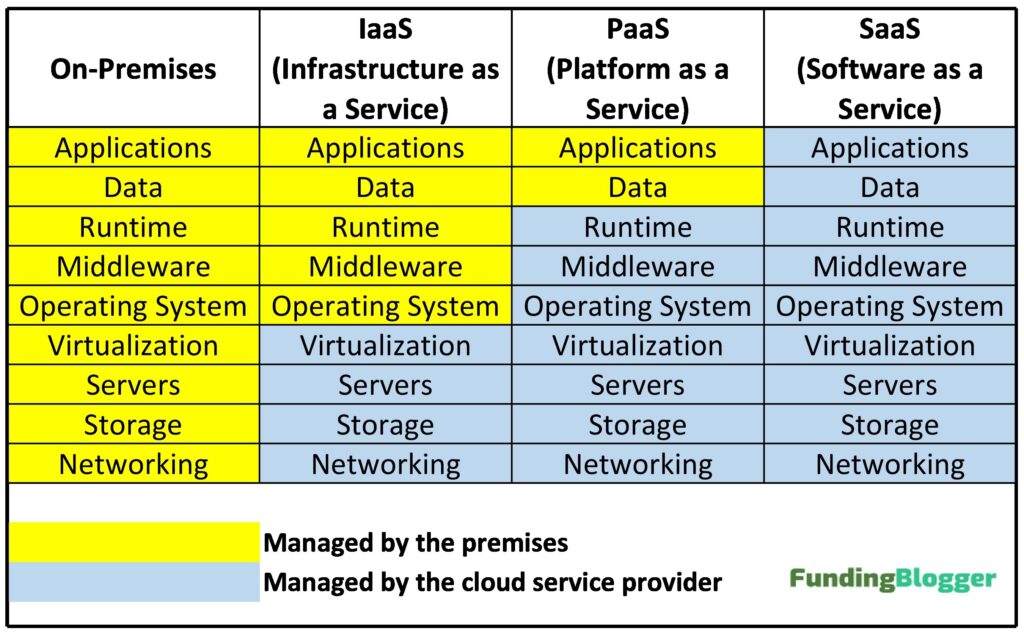IaaS PaaS SaaS are all types of cloud computing service models that a cloud service provider can offer, and you can use them on a pay-as-you-go basis via the internet. Basically, IaaS PaaS and SaaS models define what part of computing services will be managed on a per-premises basis and which part will be managed by a cloud service provider. When you need computing resources, you can decide which part of the resources you can manage on your own and which part you want to be managed by the cloud service provider. It is just like a buffet, where you can choose and decide to have the dishes as per your needs.
Now, not every company uses only one model out of these, but any company can use a combination of these models (IaaS PaaS SaaS) as per their requirements and business. Some companies are so big that they need to use all these models in different departments or subsidiaries of their business.
When we talk about computing resources, they can be comprised of various things, say Part-1, Part-2, and Part-3. Part-1 may consist of hardware (virtual machines, servers, storage, and networking), which is the basic building block of computing; Part-2 may consist of runtime, middleware, and operating systems; and Part-3 may consist of applications and data.

IaaS (Infrastructure as a Service):
When we talk about IaaS, the cloud service provider will only provide you with the basic infrastructure of the computing and other parts you will have to manage on your own on an on-premises basis. The cloud service provider will manage the virtualization, servers, storage, and networking. While you will have to manage other parts like applications, data, runtime, middleware, and the operating system on your own on an on-premises basis.
PaaS (Platform as a Service):
When we talk about PaaS, the cloud service provider will manage all the computing infrastructure as well as the runtime and operating system. All you need to manage is the application and data on your own premises. Now that you have the hardware and the runtime, all you need to do is write the code, and you are good to go.
SaaS (Software as a Service):
When we talk about SaaS, the cloud service provider will manage everything, and you don’t need to manage anything on premises. The cloud service provider will manage the hardware, operating system, runtime, applications, and data. You don’t even need to have your own application software, and you don’t need to store and secure the data either. It will all be managed by the cloud services. It is one of the most popular cloud computing models, and millions of companies today use this model somehow, somewhere in their business. Even a person who is not even doing business uses SaaS in their daily life, for example, Gmail, Netflix, etc.
Examples of IaaS PaaS SaaS-
The most popular and biggest cloud service providers are AWS (Amazon Web Services), Microsoft Azure, Google Cloud Platform, IBM Cloud, Salesforce, Oracle, Red Hat, etc.
Let’s explore Google Cloud Platform as an example:
- Google Compute Engine, one of its products, is an Infrastructure as a Service (IaaS) offering that delivers high-performance, customizable virtual machines hosted in Google’s data centers.
- Google App Engine, on the other hand, is a Platform as a Service (PaaS) offering that empowers developers to create, deploy, and scale their web applications within Google-managed data centers.
- When it comes to Software as a Service (SaaS), Google offers a plethora of SaaS products, many of which are widely recognized. Google Workspace, for instance, is a valuable Business-to-Business (B2B) product, while Gmail is practically universal, used by people around the world.
